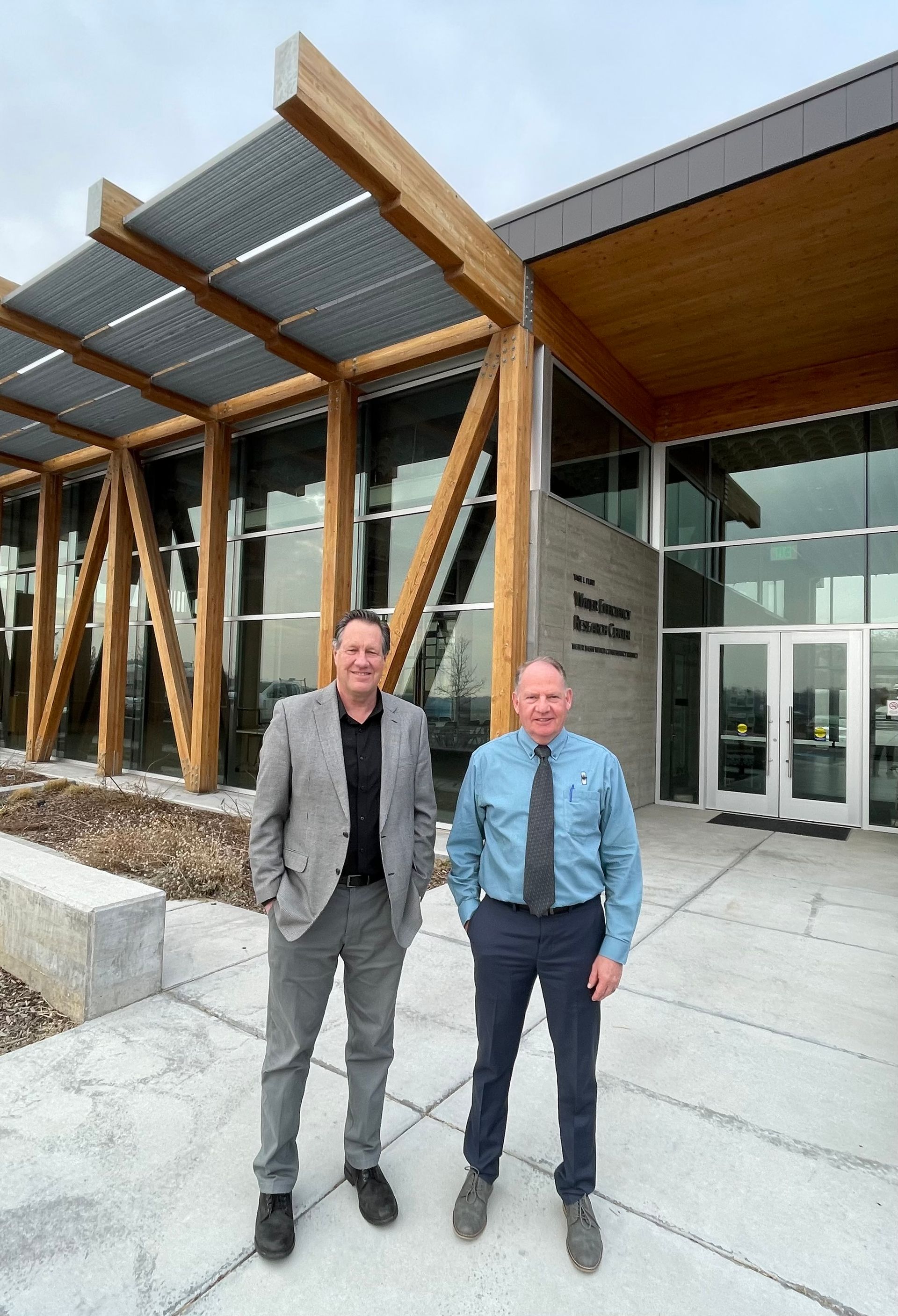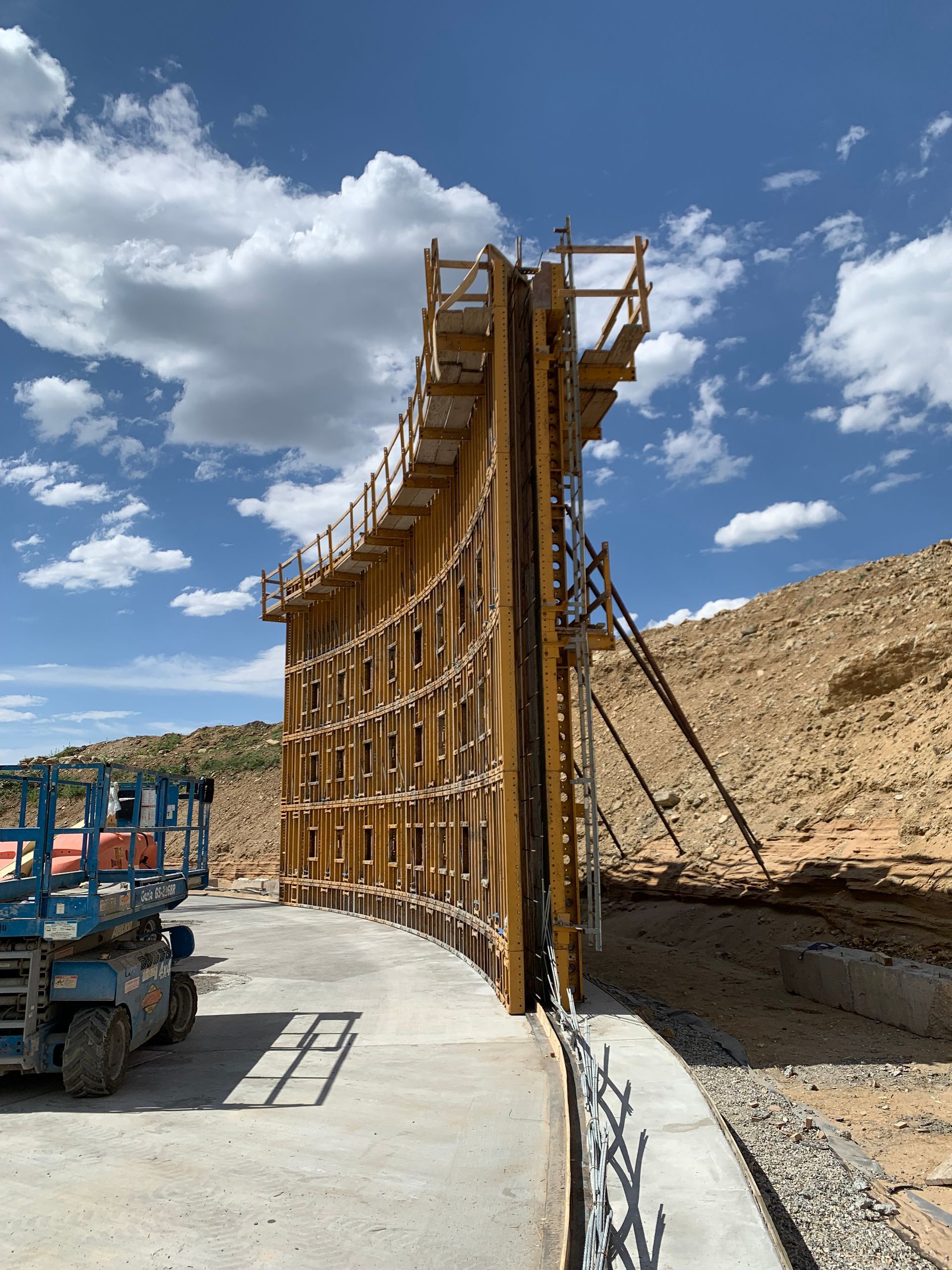For over two decades, General Manager Tage Flint was the man steering the ship at Ogden-based Weber Basin Water Conservancy District (WBWCD). He proved to be a steady guide through explosive population growth as he oversaw dozens of vital construction projects in the five counties and nearly 750,000 residents that the district serves.
Flint announced his retirement at the beginning of this year, capping a 21-year run as GM who followed his father, Ivan Flint, whose quarter-century of service included 15 years as GM from 1986 to 2001.
“The time was right,” said Flint, who plans to later pick up part-time consulting work. “We joke that it’s not the age of the car as much as the miles on it. Very few people get to 21 years at this post. If I wanted a 60-hours-a-week job, I could have stayed where I was. It [was] time to do something else.”
Rooted in Water
The combined 45-year period of district leadership is an impressive stretch of time for the Flint father-son duo, whose familial roots run deep in Davis County, dating back to early Latter-day Saint pioneers who settled the area in 1853.
The Flints even lived on Flint Street in West Kaysville, on a road named for their ancestors, including some of the earliest Davis County farmers who built canals and other early water infrastructure systems to ensure their crops would be sufficiently watered.
“So many of the old water rights were held by these old pioneer water companies,” said Flint. “What farms are left are still using those same systems.”
Call it destiny, but Flint was groomed from an early age to work in the water conservancy field. Ivan, who passed away in 2017, was a defense contract specialist on federal military contracts for the Dept. of Natural Resources before spending 24 years at WBWCD (1977–2001).
“I grew up visiting dams and spending weekends at spillways during flood years—that certainly steered me towards that background,” said Flint, who graduated from Davis High in 1980, received a Bachelor of Civil Engineering from the University of Utah in 1987, and ultimately earned an MBA from Western Governors University in 2003. “I was one of those ‘STEM’ kids—math and science came easy and interested me, and I thought I’d do something in that field. By the time I was 15 I would work summers doing landscape work and light construction on canals and diversion structures, and it all just fascinated me—how water moved around. Most people have no idea where water comes from. There is a lot to it.”
Flint worked at Jordan Valley Water Conservancy District from 1987–2001, serving under former GM Richard Bay in several capacities, including as co-GM with Bay. “He was a mentor of mine throughout,” Flint said.
When Ivan was retiring, it never occurred to him to apply for the position.
“I was happy at Jordan Valley. I got a call from a (WBWCD) board member if I was interested; they were looking for candidates.”
During Flint’s 21 years as GM, the population in the five counties serviced by the District (Weber, Davis, Morgan, Summit, and part of Box Elder) more than doubled. Today, WBWCD delivers 230,000 acre-feet annually to customers, including every city in Davis and Weber counties sans North Ogden.
“The corresponding demand for drinking water has gone up,” said Flint. “Development, policy, water rights and infrastructure have grown exponentially and in complexity in that time. It really is a different place. We have twice as many employees—everything has been in accelerated growth mode.”
WBWCD, which was established in 1950, has done a “tremendous amount of work on aging infrastructure,” Flint added, with seven major storage reservoirs along the Ogden River and Weber River as part of its stewardship, along with three hydro-power generation plants, 21 wells, four water treatment plants, and hundreds of miles of canals, tunnels, aqueducts, and pipelines.
Paxman Up to the Challenge Replacing the newly retired Flint is seasoned vet Scott Paxman. With more than three decades at WBWCD, including his time as Deputy GM since 2001, Paxman is well-prepared to lead the District forward. While his ancestors are from Nephi, he was raised in Alberta, Canada before coming to the Beehive State for his higher education. Paxman earned a Bachelor of Civil Engineering in 1983 from Brigham Young University and a Master of Civil and Environmental Engineering from Utah State University in 1985.
Paxman spent five years as a design engineer at the Utah Division of Water Resources before joining WBWCD in 1990 as a Sr. Staff Engineer. He served as Dept. Manager for all treated water in the mid-90s and oversaw major rebuilds on three water treatment plants over a 10-year period. One of his biggest opportunities will be interacting more with government officials, while also educating residents to “understand where we’re at and what we need,” he said. “Tage dealt with legislators and local entity leaders a lot more than I did as Assistant GM. I’m not at the same level as him—that’s going to be new for me. It will be challenging and interesting.”
Along with the big shoes to fill from his mentor, Paxman will have plenty of future work on his plate, including improvements on conservation programs and replacements for aging infrastructures, some of which are between 70 and 100 years old.
“A big part of the budget is to repair and replace entire systems,” he said. “We’ve got a good program, but it’s got to be pushed further.”
Overall, Paxman said the district’s water system is “in a great place. This last jump in the economy has put a strain on a few areas—growth has just been crazy—but we’re looking at infrastructure conditions and believe we’re in a great place. We’re doing well—we just have to keep up.”
Urgency of Water Conservation Efforts
Both Flint and Paxman are cognizant of the importance of their past and current roles as stewards of Weber Basin’s water supply. They stressed how vital it is for all Utah residents to take water conservation seriously.
Flint believes government and municipal entities should consider mandates that require xeriscape landscaping on all non-recreational projects, particularly new projects. He said 60% of all water is currently used outdoors during a six-month irrigation period, a number that needs to be drastically reduced given Utah’s projected robust future growth and development.
“You can see where the savings need to come from,” said Flint. “We can talk low-flow shower heads and such, but outdoor use eclipses the rest of it. We built a demonstration garden which still has a lot of green but not as much turf. […] You can reduce yard consumption by half and most people like it better.”
Paxman said he hopes the recent drought plaguing Utah the past couple of years “is not the new norm” but stresses climate change is a legitimate issue that needs to be accounted for, particularly the reduced effectiveness of snowpack the past 20 years.
“We’ve done our own climate change study that uses hundreds of models and tried to downsize those models to look at Weber Basin drainage,” he said. “We’ve seen slightly less water, but definitely warmer temperatures. We count on snowpack to carry us through the summer, so we need something to replace that. It’s going to be a challenge. People don’t like to see new dams and reservoirs. We need better education and perseverance.”
Key current projects include a new $12-million, five-million gallon (MG) culinary water storage tank above U.S. 89 in Kaysville (slated for completion this year) and a $12-million, 5.5 MG tank in South Ogden that is under construction. Another notable project is a massive 84-inch, two-mile long aqueduct that runs along the Wasatch Fault line and is expected to start this fall with a projected $50 million price tag. A new water treatment plant will be needed in West Weber County sometime in the future, to the tune of $100 million.
“We’re seeing a lot of development in west Weber County. We purchased the property for this water treatment plant in 2012 as we knew the demands were coming,” said Paxman, adding that Utah’s general population is expected to double by 2060. “That’s another Layton City every year coming to Utah. We can hardly fathom it, but our service area will double.”































